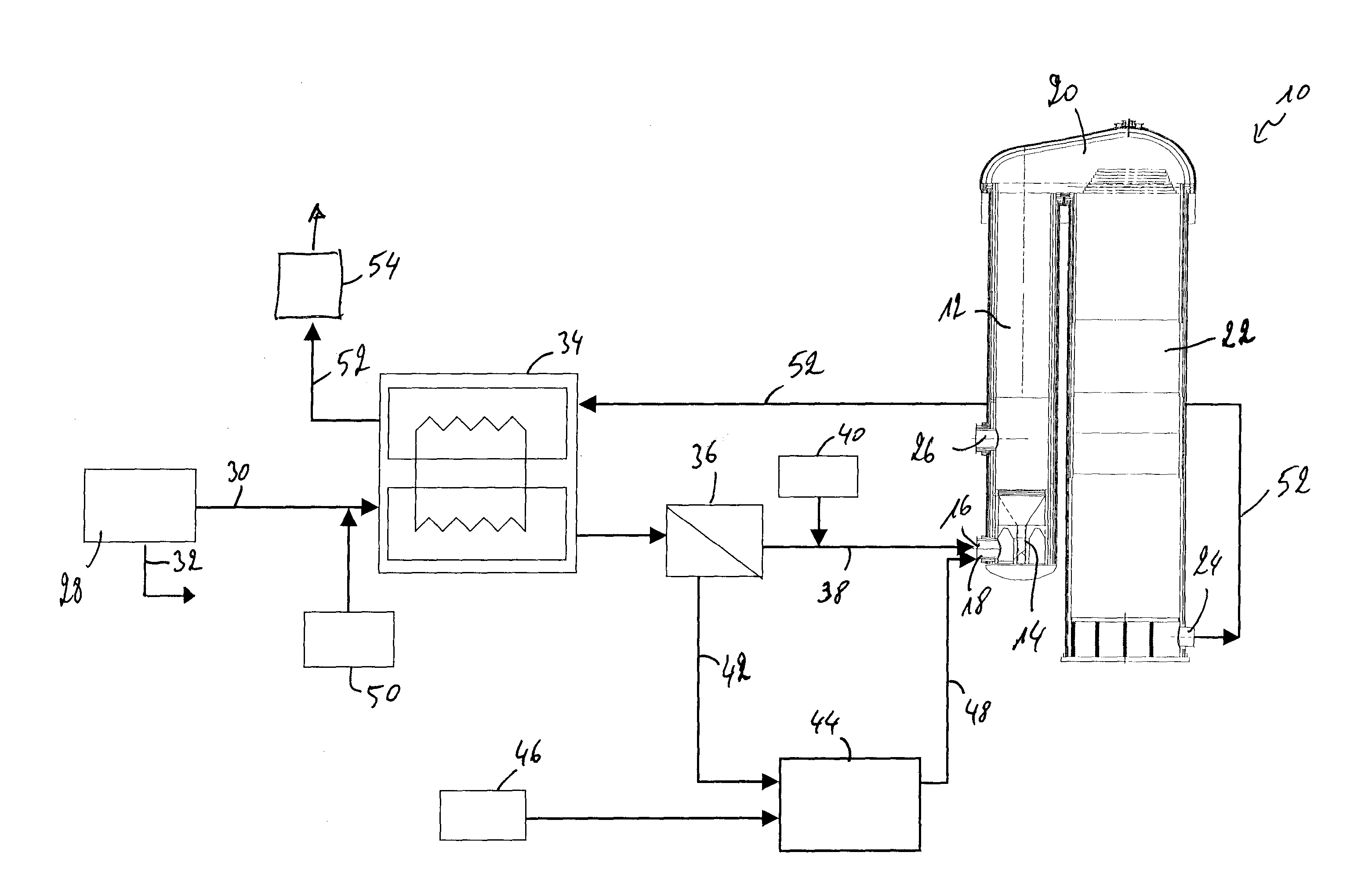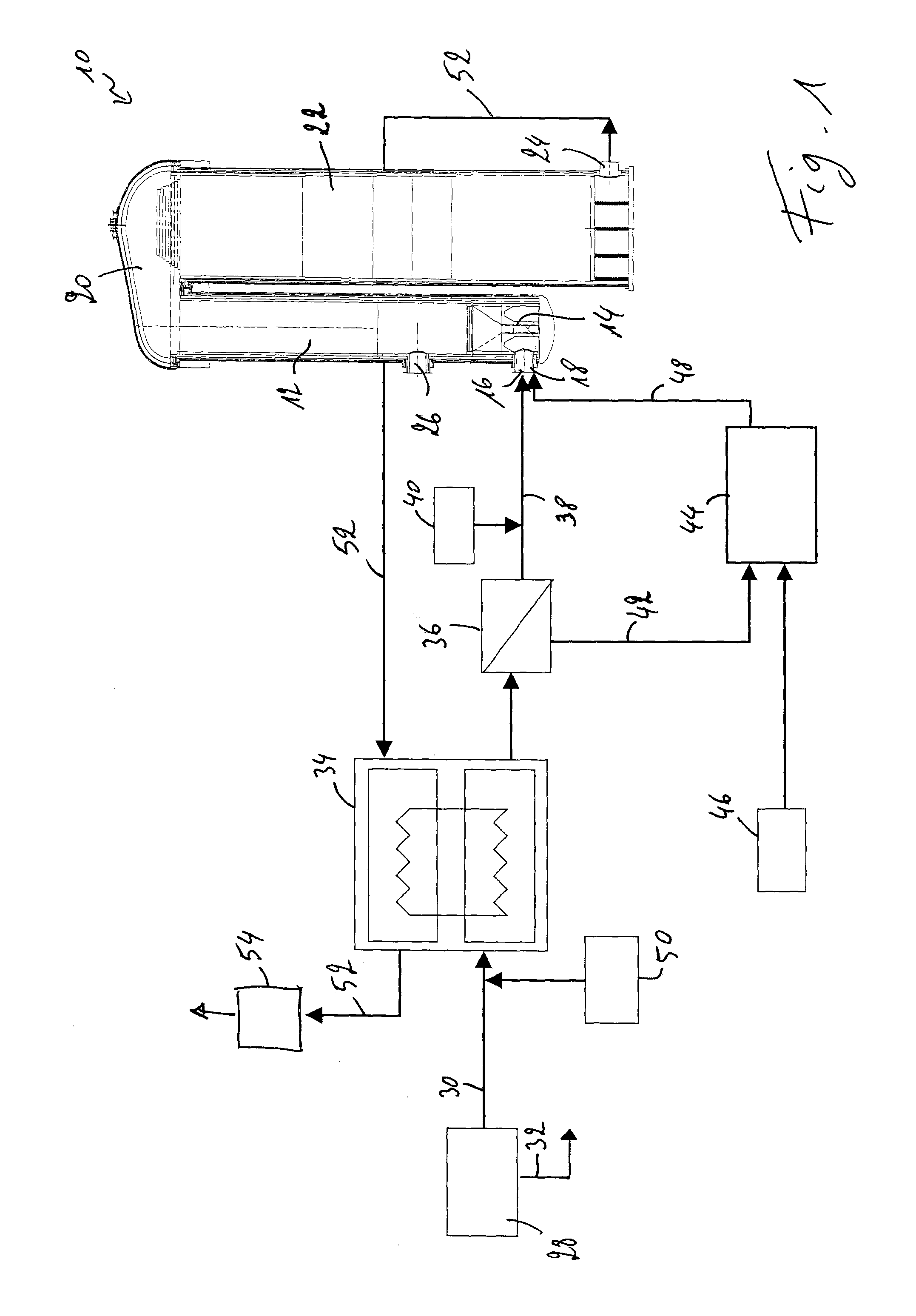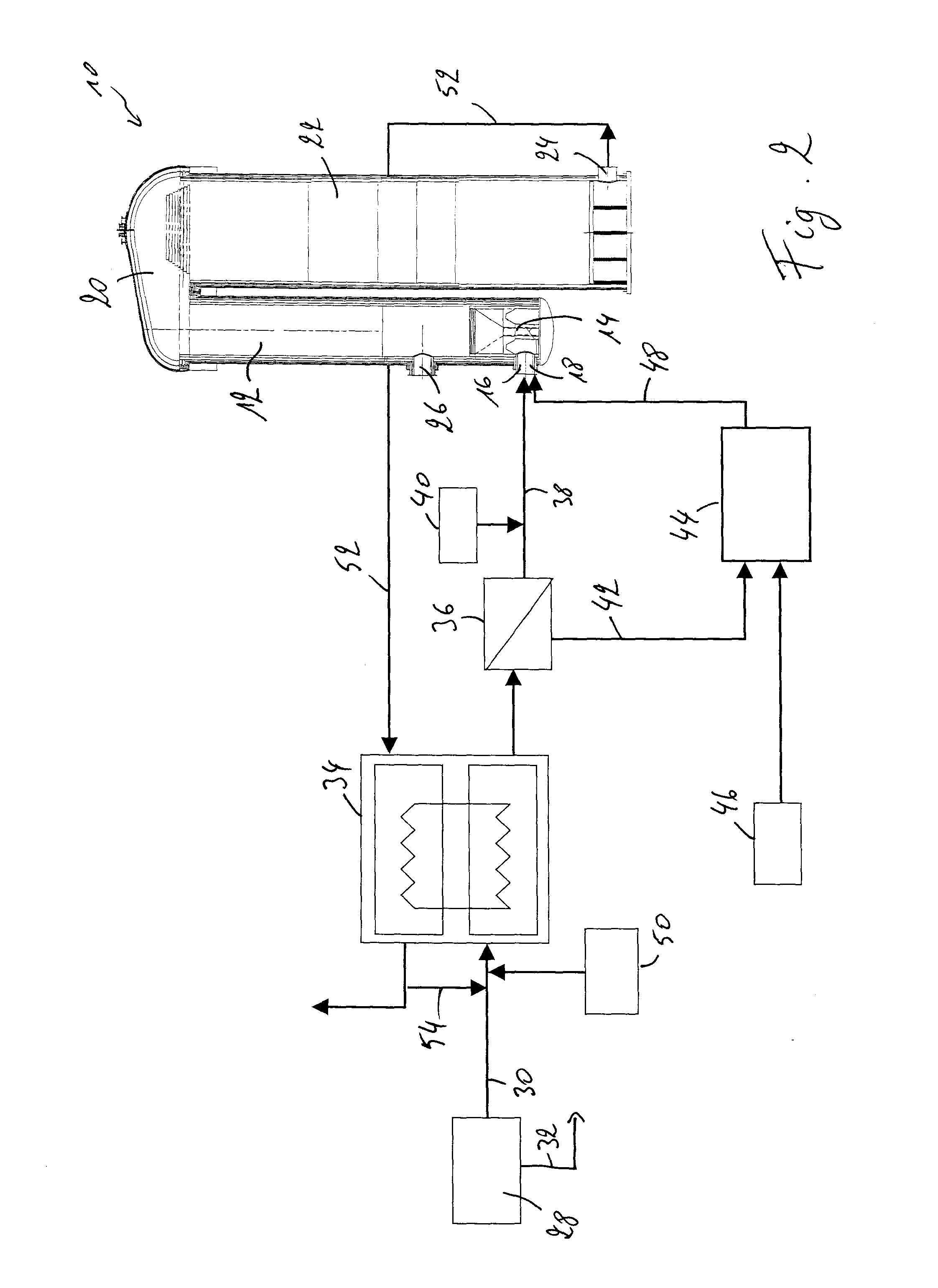Method for operating a regenerative heater
a regenerative heater and heater technology, applied in the field of regenerative heater operation, can solve the problems of uncompatibility of oxidizing gas fed to the regenerative heater during the heating cycle, unnecessarily reducing the temperature of checker bricks, and consuming time, so as to improve the ignition characteristics of tail gas and improve the burning of fuel
- Summary
- Abstract
- Description
- Claims
- Application Information
AI Technical Summary
Benefits of technology
Problems solved by technology
Method used
Image
Examples
Embodiment Construction
[0024]FIG. 1 shows a flow diagram of the heating cycle of the method for operating a regenerative heater according to a first embodiment of the present invention. FIG. 1 also shows a schematic view of a regenerative heater 10 in the form of a hot blast stove.
[0025]Such a regenerative heater 10 generally comprises a first chamber 12 with a burner 14 arranged therein. During the heating cycle, fuel and oxidizing gas is fed to the burner 14 via two gas inlets 16, 18. The fuel and oxidizing gas are ignited and their combustion creates hot flue gasses, which ascend into a cupola 20. The cupola 20 deviates the hot flue gasses and feeds them into a second chamber 22 comprising a series of heat storage means, generally in the form of checker bricks (not shown). The hot flue gasses finally exit the regenerative heater 10 through an opening 24 in the lower portion of the second chamber 22.
[0026]During the subsequent blowing cycle, process gas is blown into the second chamber 22 through the op...
PUM
 Login to View More
Login to View More Abstract
Description
Claims
Application Information
 Login to View More
Login to View More - R&D
- Intellectual Property
- Life Sciences
- Materials
- Tech Scout
- Unparalleled Data Quality
- Higher Quality Content
- 60% Fewer Hallucinations
Browse by: Latest US Patents, China's latest patents, Technical Efficacy Thesaurus, Application Domain, Technology Topic, Popular Technical Reports.
© 2025 PatSnap. All rights reserved.Legal|Privacy policy|Modern Slavery Act Transparency Statement|Sitemap|About US| Contact US: help@patsnap.com



